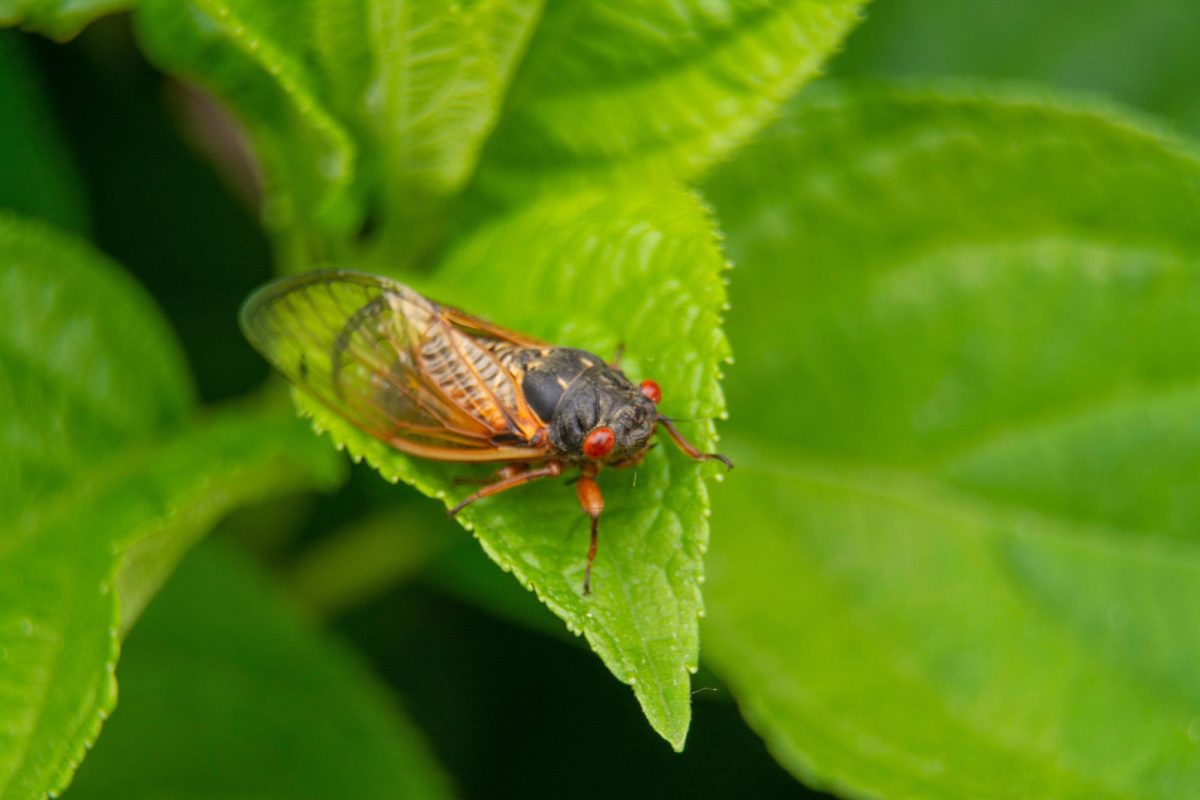This May and June will be marked by the simultaneous emergence of two broods of periodical cicada insects, Bxroods 13 and 19, across Wisconsin, Illinois and Iowa. Billions of cicadas are expected to emerge this spring, but most Wisconsinites won’t see the insects in their yard — the two broods occupy different geographical ranges across the three states, University of Wisconsin Extension entomologist and UW Insect Diagnostic Lab Director Patrick Liesch said.
Periodical cicadas emerge in broods, which categorize specific groups of individuals that share the same lifespan and emergence year. They spend almost the entirety of their lives as nymphs, living in underground networks and feeding on sap from plant roots, Liesch said.
Brood 13 matures in the soils of northern Illinois and southern Wisconsin for 17 years before they emerge, while Brood 19 occupies southern Illinois for 13 years before coming to the surface, University of Illinois Extension horticulture educator Ken Johnson said.
Because of their different lifespans, the last time the two broods coincided was 1803, Liesch said.
“Whenever something like this happens, it is really interesting to scientists because there may be that possibility of interbreeding between the broods,” Liesch said.
There are actually three species of 17-year cicadas and four species of 13-year cicadas emerging in the same area in 2024, so while interbreeding may occur, the long lifespan of periodical cicadas would mean it could take years for scientists to determine if a hybridization event occurred, Liesch said.
Western scientists began documentation of periodical cicada broods in the 1630s, but it was only in the early 1900s that scientists developed a categorization system for the periodical cicada broods that is now used today — a testament to the lengthy period of time required for periodical cicada research, Liesch said.
“For the year of an emergence … soil temperature is the biggest predictor,” Liesch said. “They [periodical cicadas] need it to be warm enough. That exact number is about 64–64.5 degrees Fahrenheit at a soil depth of eight inches.”
Under the warming soils, nymphs will tunnel to the surface at night and begin the process of mating by singing their famous high-decibel songs. In high density areas, these blaring choruses reach 70 to 90 decibels — comparable to vacuum cleaners and motorcycles, respectively, Liesch said.
While their noise can be uncomfortable for some people, the cicada broods this year will provide unique ecosystem services. When cicadas emerge from the ground, they create small tunnels that allow oxygen to permeate the ground, supporting soil and microbial health, Johnson said.
The cicadas also compose an enormous food source for vertebrate predators and even humans, Johnson said. Once the cicadas die, their bodies provide free fertilizer for the landscape and recycle important nutrients, Liesch said.
But, the periodical cicadas can sometimes damage young trees when females deposit their eggs into small branches and twigs using a sharp structure, called an ovipositor, that pierces the plant, Liesch said. Mature, well established trees may experience some natural pruning when cicadas kill their outermost branches by egg depositing — a process called flagging.
“If you get enough egg laying in there [trees], the branches could break, and if the trunks are small enough and they [cicadas] lay them directly in the trunks, it could kill the trees,” Johnson said.
Researchers believe cicadas emerge in large numbers as a survival strategy — if the insects overwhelm their predator population, then more of the insects are likely to survive and reproduce. Mayflies use a similar strategy to overwhelm their systems by emerging in the billions, but periodical cicadas are unique in their long life cycle, Johnson said.
It is also thought that cicada emergences are situated along atypical 13 or 19 year timelines to avoid synching life cycles with predators. Predators like birds and raccoons can learn to expect insect emergences when they follow a three or four year timeline, so the periodical cicadas avoid this by epically extending their lifespans beyond predators’ internal clocks and lifespans, Liesch said.
Researchers believe periodical cicadas count the years by tracking the chemical makeup of trees that change during periods of dormancy, like the winter and periods of tree growth, when their circulatory structures and roots grow, Johnson said.
Yet, climate change may threaten these cues. According to Johnson, shorter winters will probably result in an earlier periodical cicada emergence. Depleting tree resources may also affect the periodical cicada populations, because they depend so greatly on trees as a nymphal food source and breeding grounds as adults.
People tend to focus on the bad outcomes of cicada emergences, like the noise and tree damage, but cicadas are important parts of midwestern ecosystems, Johnson said. They are also not dangerous to humans or pets because they will not bite, sting or even defend themselves.
“For the average human lifespan, you may only be able to witness a particular brood emerging at the same spot at the same time three or four times in your life,” Liesch said.
This, though, is a once in a multigenerational opportunity — it happens only every 221 years, Johnson said. Liesch, who hasn’t seen the Wisconsin cicadas broods himself, is excited to witness the amazing natural phenomenon and urges everyone to keep an eye out this spring for these long-living insects.


